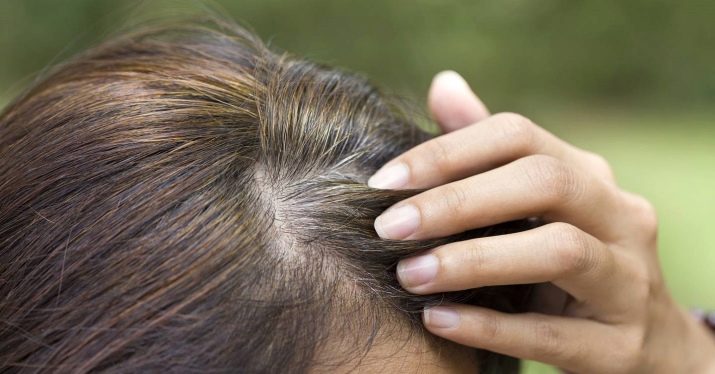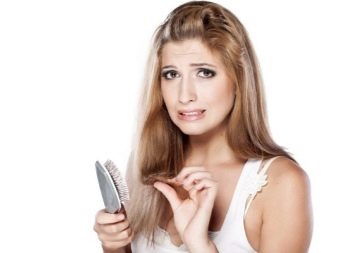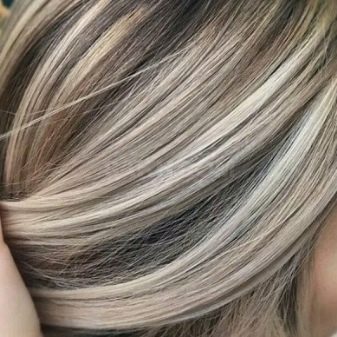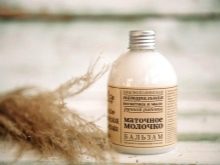How often can you dye your hair?

Fashion trends involve not only changes in clothing style and the emergence of new accessories, but also unusual hair colors. Therefore, it is not surprising that women of fashion, trying to get into the trend, are ready to follow such trends, quite often changing their hair tone using modern dyeing technologies. But is it really safe for hair - it is worth seriously thinking about it.


Advantages and disadvantages
Most women decide to dye because of dissatisfaction with the natural color of their hair. Another reason for the popularity of this procedure is gray hair, an inevitable attribute of aging, and you always want to stay young. But before you implement your plan, you should familiarize yourself with the advantages and disadvantages of the process, perhaps someone no longer wants to change the natural tone of their hair.
Of course, there are the following pluses:
- painting is justified if your tone does not differ in depth, and with the help of this technology, the hairstyle will look brighter and more attractive; but it is advisable to slightly deviate from the natural color, for this softer tinting compositions are suitable, giving the desired shade;
- persistent paints are almost salvation for those who need to eliminate such a flaw as gray hair;
- with high fat content of the hair, the dye will help to solve this problem due to the drying effect;
- if the lady is aged, lightening will help to rejuvenate the appearance.

Despite all the advantages, the procedure has such obvious disadvantages as:
- coloring requires constant correction, since the roots grow back, the appearance of the hair becomes sloppy;
- additional care for colored strands is not limited to mild shampoos and conditioners - hair needs masks, protective agents that protect from external influences, that is, special moisturizing tonics, lotions and nourishing creams, otherwise the curls look untidy, too fluffy, electrified, do not look aesthetically pleasing;
- after painting, you have to exclude the use of stylers, tongs and hair dryers, so as not to completely ruin the hair.
Important! Some troubles can be avoided if you know which paints are worth using, how to properly care for the strands and how often to paint them.

Influence of different types of staining
All kinds of dye formulations act in different ways, but even if they contain a minimum of chemical components, their effect is detrimental to the hair. In fact, absolutely harmless dyes do not exist.
- The greatest damage is caused by paints intended for lightening and bleaching, the most dangerous are persistent dyes that penetrate deep into the hair and paint over even gray hair. But no less destructive are the compounds that can penetrate the cuticle. They contain about 90% hydrogen peroxide and hydrogen nitride (ammonia). Constant application over the entire length makes the strands dry, damages the ends, causes a split. In addition, in dyes that dye dark, for example, black hair, in addition to ammonia, there are other harmful additives such as lead, you can imagine how aggressive they are towards the strands.
- Semi-permanent paints do not contain ammonia, while peroxide is present in an amount of 4.5%. They usually include emollient natural oils, but the harmful oxidation process does not exclude their presence.
- When toning, tint dyes are used, which, as a rule, are quickly washed off, in contrast to persistent formulations. But they are relatively safe - if you use them often, overdrying of the hair still occurs.


Natural basma and henna belong to the category of harmless dyes. These formulations are not capable of causing harm to the hairstyle. Moreover, they improve the structure of the hair, and the color becomes more vibrant thanks to herbal ingredients, not to mention the color stability. The conclusion suggests itself - if it really is necessary to update the color or paint over gray hairs, then it is better to choose less aggressive dyes.
With a radical change in tone, you will have to carefully and competently take care of the curls in order to partially neutralize the harmful effects and maintain their vitality.


When and how to use different types of dyes?
To dye your hair without damage or with minimal risk of damage, you need to be able to correctly assess their condition and correctly select the type of dye. Let's consider options that are suitable for different cases.
- If the hair is bleached or lightening, it is logical to choose the appropriate stable composition. Such a procedure along the entire length of the hair should be carried out no more often than once every one and a half or two months. In this case, you need to carefully study the shade that was obtained during the first painting. If you need to apply a different shade to bleached hair, you should not do this immediately after dyeing - first you need to improve your hair. When discolored, regrown roots can be dyed more often, for example, once a month, while observing the instructions attached to the dye.


- Some grow gray roots very quickly. - this happens within 2-3 weeks. This does not mean that you need to immediately take on stable, potent and indelible compounds. For 20 days, you can use less dangerous tonics for painting, which will make gray hair less noticeable, and after 2 months, repeat the use of persistent paint. Another tip is that to mask gray hair, you do not need to take too bright or dark shades, against which it will stand out even more.

- For sustainable coloring you can also use less harmful formulations with useful additives and oils. Ammonia-free paints will not cause damage if applied every month. Usually, these are tonics, light in texture and capable of dressing each hair in a different color without penetrating the cuticle. Such coloring gives excellent results - deep, natural color, shine, while curls lend themselves well to styling.


- Toners - tint balms and shampoos without harm to the health of hair, they are used every 10-14 days, and they are washed out in 7-8 times. The essence of the procedure is to envelop each hair with the thinnest film of pigment substance. Despite the seeming safety, such a dye also causes damage - it increases the density of the hair shaft, prevents the flow of oxygen into the pores, so it is not recommended to use the product more often. When natural hair is dyed with balm, it is washed out even more rapidly, and it is used once every 10 days, but keratin fibers are not subject to loosening, in other words, they are not damaged, and this is the basis of the hair.


- Paints from natural plant pigments, such as basma and henna, are relevant for owners of brittle and split ends. To restore them, these dyes are used every 30 days. For those with oily hair, these products should be applied every two months. To make the curls brighter, you can dye your hair every 20-30 days. Natural dyes have one more advantage - they can be applied even by women who are carrying a child, but with the help of them you cannot lighten, but you can only give a beautiful shade to dark hair. Blond young ladies also have the opportunity to use these dyes to get golden or chestnut tones, separately they cannot use basma, as it will make the hair unnaturally green. Professionals advise adding liquid vitamins (retinol and tocopherol), burdock oil and honey to the coloring composition when dyeing with basma and henna, which will avoid overdrying the strands.


Is it possible to use staining less often?
In fact, frequent painting can be avoided, but to do this, the following reasonable requirements must be met:
- it is necessary to select high quality dyes, after the application of which the color remains for a long time; in addition, they most often contain useful oils that allow you not to dry your hair;
- it is advisable to wash your hair as rarely as possible so that the color is not washed out; you can use special shampoos and conditioners that maintain the brightness of the tone;
- do not use anti-dandruff shampoos, as they have a high ability to wash off the color;
- the fastest become faded red and red shades of paints that require regular restoration, it may make sense to choose other tones.


Other modern technologies for changing color can become an alternative to classic dyeing - gentle methods of uneven coloring of curls. These are similar trends, which are characterized by darker roots, tone stretching, and smooth color transitions. Of course, we are talking about such innovative procedures as ombre, balayazh and shatush.


But the rules for caring for hair after dyeing remain unchanged - this is the rejection of thermal exposure, the use of a comb with rare teeth, a careful attitude during and after washing, the use of nourishing and moisturizing agents.
These rules are simple, but if you follow them, even colored curls will look healthy and beautiful.



For information on how often you can dye your hair and how to restore it after dyeing, see the next video.








